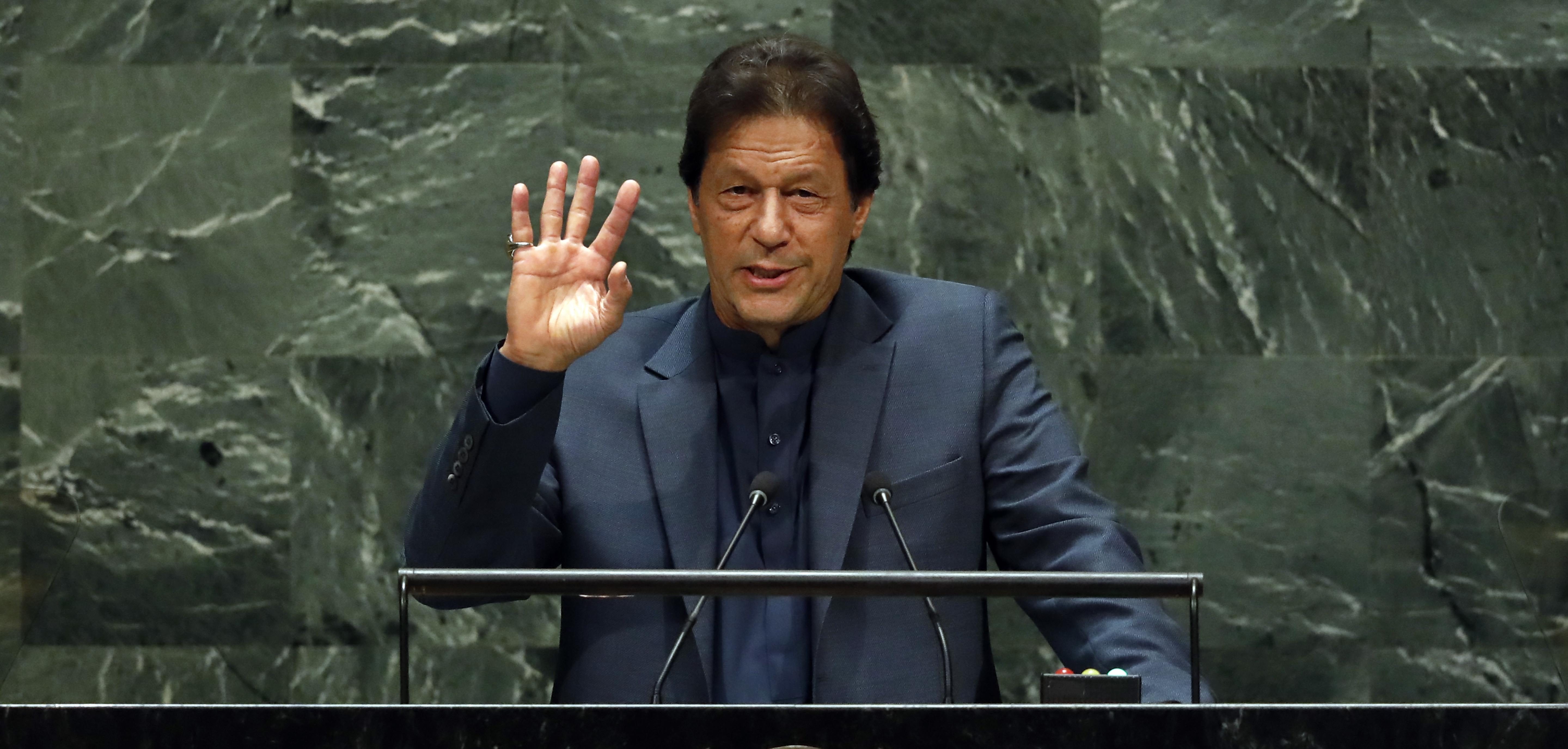
Proposed media law has Pakistan journalists on the boil
The proposed PMDA law has drawn flak from experts and opposition, which dubbed it “repressive and punitive instrument to suppress constitutional freedom of expression of print media, electronic media, and online citizen journalism”.

Over the last few days Pakistan’s media – offline and online – has been up in arms against the Imran Khan-led Pakistan Tehreek-e-Insaf government. The trigger was an attack on young journalist and vlogger Asad Toor on May 25 allegedly by men belonging to the dreaded Inter-Services Intelligence.
The attack came after the government proposed the formation of a Pakistan Media Development Authority (PMDA) to “converge multiple media regulatory bodies in Pakistan and expand the ambit of regulation for digital media”.
The proposed law has drawn flak from experts and Opposition, which dubbed it “repressive and punitive instrument to suppress constitutional freedom of expression of print media, electronic media, and online citizen journalism”.
Toor, in a statement to the police, said he was questioned on the sources of his income and “funding” and was forced to shout slogans praising the Pakistan military and the ISI, apart from denouncing India, Afghanistan and Israel.
Also read: China’s friendly grip may end up ‘swallowing’ Pakistan
The ISI has been accused by rights groups of involvement in forced disappearances and extrajudicial killings in insurgency-hit Balochistan and elsewhere. Pakistan’s military’s press wing has not commented yet on Toor’s allegation.
In Toor’s defence, many Pakistani journalists came out and criticized the military for “weakening democracy” in the country, already besieged by radicalised groups and shaken by a tottering economy.
Hamid Mir, a popular TV anchor with Geo TV, openly declared: “If they beat us up in our homes (ghar me ghus ke marenge), well, we can’t enter their homes because they have guns and tanks, but will reveal which wife of a General shot at her own husband and why.”
The punishment for Mir came fast and furious: he has been taken off air, angering the entire journalist community in Pakistan.
Also read: Helping India, Pakistan restore functional ties: UAE
The proposed law
The PMDA is proposed as a regulatory body that can “cater to professional and business requirements of all forms of media and their users”. It is meant to replace the current “fractured” regulatory environment and “fragmented” media regulation by multiple bodies. This means the PMDA will be responsible for the regulation of print, broadcast and digital media in Pakistan.
Under an ordinance drafted for the establishment of the authority, all previous laws pertaining to media regulation, control or indirect control will likely be abolished and fresh legislation will be enacted, giving legal cover to the PMDA and its functions.
Here’s what this powerful media body through the stringent law will do:
Digital media: The PMDA will be given the authority to register digital media platforms, monitor and analyze them and ensure the enforcement of cyber laws. This could mean that a licence will have to be obtained from PMDA to set up a digital media platform.
The PMDA will have the authority to impose sanctions on media entities in case of any violations of regulations – which too will be framed by it – and greater control on the content published and shared on digital media.
Guidelines will be issued to the media “for code of conduct and national security issues” and establishing a wing within the PMDA for “forensic cyber audit”. The body wants to increase the monitoring of revenues generated through online advertisements.
Broadcast, print and films: The PMDA will also be responsible for regulating broadcast and print media. It will issue no-objection certificates (NOCs) for film production and exhibition, issue licences for and monitor broadcast media, and register print media entities.
Under the proposal, the government will set up media complaints councils in all major cities to receive, scrutinize, investigate and review complaints pertaining to content published or broadcast on media platforms and the non-payment of wages to media workers.
‘Draconian law’
Media organizations, including the Pakistan Broadcasters Association (PBA), All Pakistan Newspapers’ Society, Council of Pakistan Newspaper Editors and factions of the Pakistan Federal Union of Journalists, have termed the proposed ordinance “an unconstitutional and draconian law”.
The PBA has said the authority was “aimed against the freedom of press and expression” and a step towards imposing state control over media operations.
Media bodies quoted in the PBA press release termed the PMFDA ordinance an “extension of the now-defunct Press and Publications Ordinance 1963 of the Ayub Khan era”, having regimental provisions to take over independent and free media.
Opposition Pakistan Muslim League-Nawaz’s information secretary Marriyum Aurangzeb called the PMDA a “repressive and punitive instrument to suppress constitutional freedom of expression of print media, electronic media, and online citizen journalism”.
Pakistan People’s Party (PPP) senator Sherry Rehman said the proposed PMDA ordinance is “media martial law”. She alleged that actions of intolerance towards independent journalism were constantly increasing under the present government, adding that Pakistan ranked 145 out of 180 countries on media rights watchdog Reporters Without Borders 2021 World Press Freedom Index.
ISI & ‘Gen Rani’
Everyone in Pakistan knows who Hamid Mir was referring to in his condemnation for the attack on fellow journalist Toor: Gen Faiz Hameed, the ISI chief, who was allegedly caught with a girl by his wife and shot at. That episode gave rise to an almost forgotten chapter of Pakistan history: ‘Gen Rani,’ a powerful woman during Yahya Khan’s military rule in the late sixties and early seventies. Reports said that the daughter of ‘General Rani’ is a famous journalist in Pakistan and that she was present at the ISI chief’s house. That ‘journalist’ is widely believed to be a “good friend” of Punjab Chief Minister Capt Amarinder Singh.


